

FUKUOKA, JAPAN
Celebrating 20 Years of Friendship and Collaboration
Sister City Relationship with Atlanta
-
Since 1972, the Atlanta Sister Cities Commission (ASCC) has been building meaningful relationships with 17 cities around the world, fostering cultural exchange.
-
Atlanta and Fukuoka became partnership cities in 1993, and in 2005 officially became sister cities. This year, 2025, marks the 20th anniversary of the sister city agreement.
-
Both Atlanta and Fukuoka are regional leaders in transportation, technology, and manufacturing.
-
Each March, high school students from Fukuoka visit Atlanta to experience local school life and stay with host families.
-
This June, high school students from Atlanta will visit Fukuoka, while in August, students from Fukuoka will visit Atlanta.
-
Every July, four Atlanta students (age 11) are selected to participate in the fully-funded program, the Asian-Pacific Children’s Convention in Fukuoka, organized by the Japan-America Society of Georgia (JASG). In March 2025, a group of students from Fukuoka took part in an APCC program to visit Atlanta. Mutual exchanges between the two cities continue to thrive.
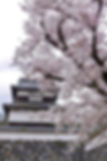
Historical Significance
Fukuoka has flourished as Japan’s gateway for trade with both China and Korea since ancient times.
In the 17th century, under the leadership of Kuroda Nagamasa, Fukuoka Castle was constructed.
Fukuoka thus developed as a castle town in the Kyushu region, establishing itself as a vital hub for trade and commerce in the area and an important center for both politics and economy.
In the 19th century, during the Meiji Restoration period, Fukuoka expanded as a thriving port city to facilitate trade, with railroads connecting it to other parts of Japan. Today, it continues to serve as a key port in Japan.
Sources
Atlanta Sister Cities Commission, Sister Cities History.
Atlanta Sister Cities Commission, Fukuoka.
Yes! Fudousan, Fukuoka’s History and Cultural Heritage.

Discover Fukuoka
Surprising Facts You'll Enjoy
-
Fukuoka and Hakata were originally separate areas, Hakata was a port and merchant district, while Fukuoka served as the political center.
-
In 1889, these two areas merged to form the modern city of Fukuoka, combining their distinct histories and cultures.
-
Fukuoka's traditional crafts include Hakata ningyō (intricate dolls) and Hakata-ori textiles, both reflecting Fukuoka's rich artisanal heritage.
-
Since ancient times, Fukuoka has been a regional hub, serving as a gateway to Asia, fostering academic, cultural, and economic connections between Japan and the rest of the continent.
Sources
Atlanta Sister Cities Commission, Sister Cities History.
Real Estate Fukuoka, Fukuoka's History & Cultural Heritage.


Explore Fukuoka
Culture and Experiences

Fukuoka
Tonkotsu Ramen
Hakata tonkotsu ramen is characterized by its combination of thin, springy noodles in a rich, savory, cloudy pork stock.
Many shops allow customers to choose how firm they want their noodles, from al dente to well done.
Furthermore, the concept of kaedama, adding another serving of noodles to further enjoy any leftover soup, is a uniquely Fukuokan concept.
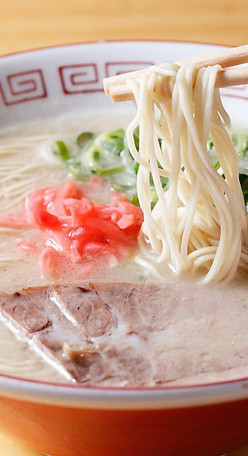
Hakata Gion Yamakasa Festival
The Hakata Gion Yamakasa Festival is the main event in Fukuoka's calendar.
This summertime festival starts on July 1st and, after a series of different events, reaches its
exciting climax on July 15th with the early-morning oiyama race.
Serving as the highlight of
the festival, teams of men from different districts carry traditional oiyama floats weighing around a ton as they run just over three miles around the city, starting at the famous
Kushida Shrine.
Massive decorative versions of these floats, known as kazariyama, are
also displayed around Fukuoka during the festival period.
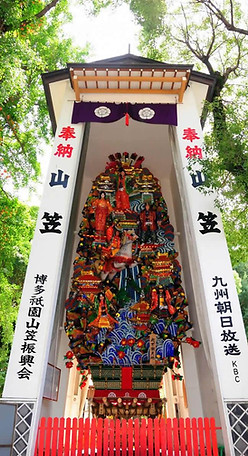
Hakata Ningyō Dolls
Hakata Ningyō are unglazed porcelain figurines from Fukuoka, depicting traditional subjects such as kabuki actors and women.
Originating 400 years ago, they are celebrated for their delicate craftsmanship and expressive realism.
These dolls became internationally recognized, symbolizing Japanese beauty and artistry.
Source
Government of Japan, Hakata Ningyo Expressing Human Emotions
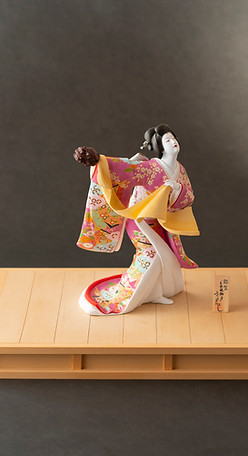
Fukuoka Tower
Reaching a height of 768 ft., Fukuoka Tower stands next to a beautiful, sandy beach,
towering over Hakata Bay and serving as one of the city's central landmarks.
It features a sharp-looking, triangular design and is covered in 8,000 semi-mirrored glass panels, leading to its nickname: the "Mirror Sail".
The observation deck situated 404 ft. up offers stunning views of Fukuoka and the surrounding land and sea features, making it a must-see visit for any traveler.
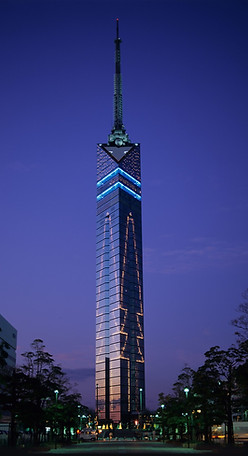
Yatai
As night falls, the streets of Fukuoka transform as food stalls known as yatai line the main boulevards, and the boisterous energy of the night begins to well up.
When you pull aside
the noren curtain to enter and sit in one of these stalls, the person in the next seat may
initially be a stranger, but as the night goes on, you will surely become friends.
Yatai are so fun because everybody drinks together; this is the golden rule of yatai!
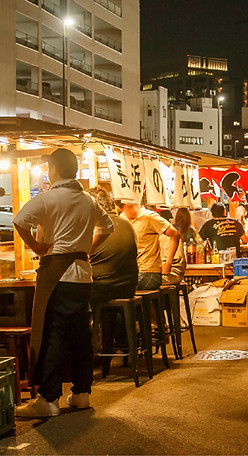
Hakata-Ori Textiles
Hakata-ori is a silk weaving technique that sharply pushes bundles of fine weft threads into thicker warp threads.
Known for its tight weave, it is highly prized as obi belts for kimono.
Today, a wide variety of items made from Hakata-ori are popular as gifts and interior
decorations.
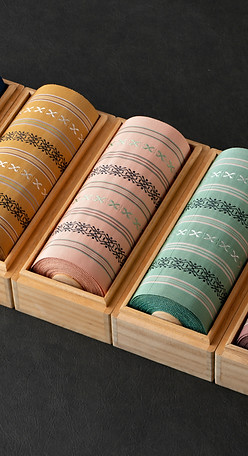
All images and text provided by Fukuoka City Hall

.png)

